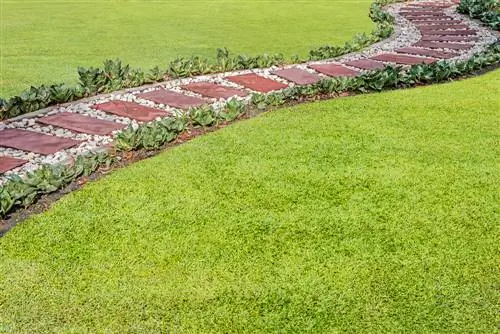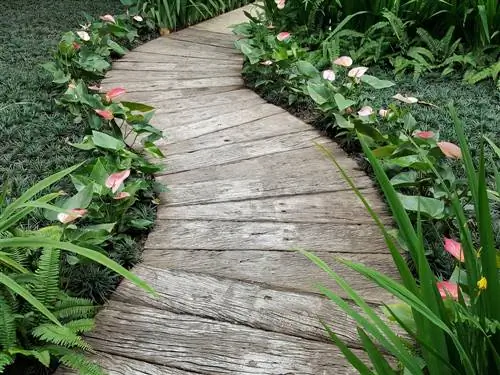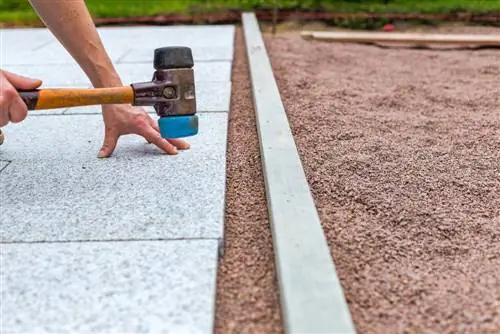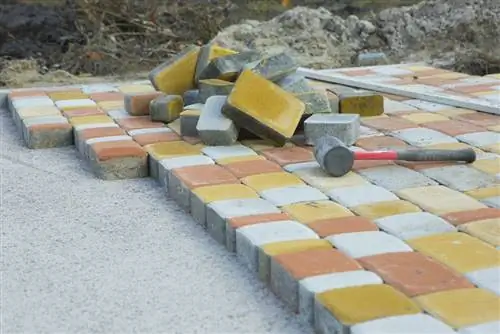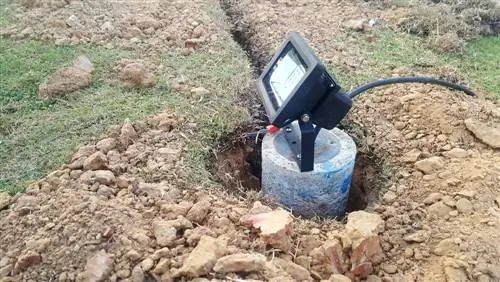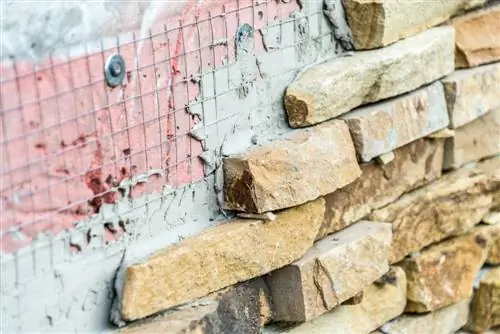- Author admin [email protected].
- Public 2023-12-16 16:46.
- Last modified 2025-01-23 11:21.
Using finished paving slabs, you can pave wide garden paths or just lay them as individual stepping stones. You can find the plates commercially made of plastic or concrete. You decide which plates and which path is the best choice for you.

Which slabs are suitable for a garden path?
There are various options available for a garden path with slabs: ready-made concrete slabs, plastic slabs, various natural stone slabs or self-poured sidewalk slabs. The choice depends on budget, taste and desired look.
One of the cheaper sidewalk options is a path made of simple concrete slabs. Much more decorative, but also more expensive, are natural stone slabs, which you can buy in various designs at hardware stores. Plastic paving tiles are also cheap right now. Because of their low weight, they are easy to carry and transport.
When does a paved garden path make sense?
Paths that are used very frequently are usually fully paved. This includes, for example, the path from the garden gate to the front door. That makes perfect sense, because this path should be safe to walk at any time and in any weather, even for strangers like the postman.
A paved path is easy to push snow on and does not become muddy or slippery from heavy rains. This means that as little dirt as possible is carried into the house. If the panels are laid evenly, there will be no tripping hazards along the way. Even cleaning such a path is quite simple. A paved path is comfortable and easy to maintain, but a little more complex to produce.
When are individual stepping stones best suited?
Individual stepping stones are suitable, for example, for relatively little-used paths or lawns. If you often walk the same path across your lawn, over time a “beaten path” will develop there. The grass grows slowly at this point and a bare path is soon visible. Then at the latest you should think about a way out of tread plates.
If the stepping stones are installed correctly, they won't interfere with mowing the lawn. So make sure you place them at ground level. Compared to a fully paved path, one made of stepping stones is much cheaper and more flexible. You don't have to create a substructure and can later put individual slabs in different places or change the course of the path completely.
Can I pour paving slabs myself?
If you don't like the paving slabs in stores or you simply want to use your creativity and skill, then you can also cast paving slabs yourself. To do this, you need a mold (€18.00 on Amazon), dry concrete, water and well-fitting work gloves. A simple square frame made of slats is suitable as a mold. If you want to make a lot of panels, it's best to use several frames, otherwise the work will take an extremely long time.
Possibilities for paving slabs:
- finished concrete slabs
- Plastic panels
- various natural stone slabs
- Cast paving slabs yourself
Tip
If you are reasonably skilled and have enough time, then pour your paving slabs yourself. This will definitely make your garden path unique.

